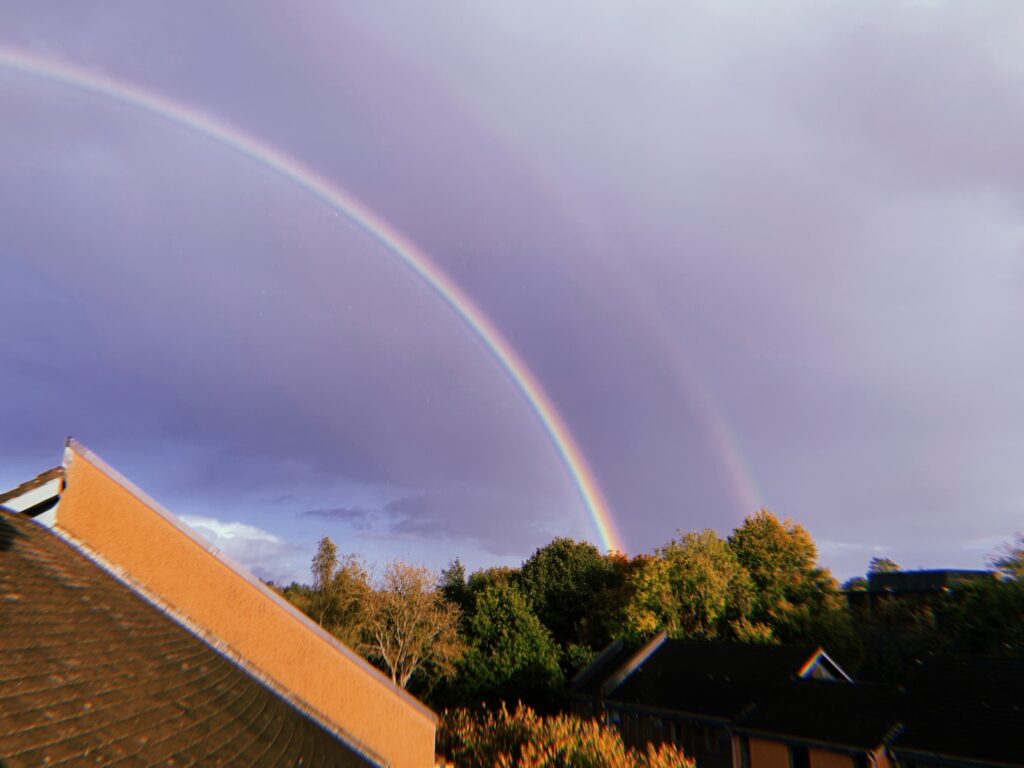Of all the many pieces of advice I received before moving to Ireland, the most common refrain involved weather: be prepared for rain. So perhaps it was preordained that when I arrived in Limerick, on a gray, brooding afternoon in early September, it would be amid a proper Irish downpour.
Still in a bit of a daze after overnight travel and two flight transfers, I hauled my two hulking black suitcases off the bus and lurched into my taxi. My driver, Philip, a chipper man in his 60s, greeted me with a friendliness and curiosity that I would soon recognize as characteristic of many Irish people. Over the next twenty minutes, he peppered me with questions and proceeded to give me a tour of the University of Limerick’s campus, jabbing a finger at various buildings and explaining to me the quickest way to navigate from dorm to classroom. I remember being awed by the beauty of the campus: the lush, expansive lawns, the forest that lined the roads and intermingled with university buildings, or the “living bridge” that arched over the river Shannon.
In the two months since that taxi ride, that initial wonder has remained, but it has also evolved into something more domestic — an appreciation for small moments of beauty and for the pockets of campus that have become familiar, like the ten minute walk along the wooded trail that snakes between my apartment and the gym, or the cotton-candy sunsets I’ve taken in from my balcony.
I’ve also ventured further afield in search of Ireland’s natural beauty. Limerick is a gateway to the Wild Atlantic Way, and many bus tours begin at my campus, allowing me to easily travel to some of the country’s most scenic spots. I’ve climbed in a rusty shipwreck on one of the Arran Islands and watched waves thrash the cliffs of Moher. At Killarney National Park, I caught a glimpse of Ireland’s elusive red deer, and at Muckross Abbey, I admired a 400-year-old yew tree. Our tour guide shared a local legend: they say that touching the tree gifts you greater artistic creativity, causing many writers to journey to the abbey in search of inspiration.
Like all myths, this one is probably rooted in truth. Art, creativity, clear thinking, self-knowledge — all such things flourish when nurtured by silence and space, two commodities that become more plentiful with proximity to natural beauty and are increasingly scarce in our frenzied, urban lives.
I felt that scarcity last year when living and working in Manhattan as a journalist. I love New York and its people; I hope to return after this year. Still, there was something about the city’s unrelenting pace, sheer noisiness and constant professional and social demands on my time that cannibalized my attention and scattered my thoughts. In a city of many extraordinary luxuries, silence and solitude were the two that felt most out of reach.
Not so in Limerick. Now, when I look out my window, instead of seeing a stream of honking taxis on First Ave, I see trees, flush with their fall foliage, and a field that flows into the Shannon. I have space to think more deeply about myself and my place in the world.
And, of course, I’ve had many more rainy days since that first one when I stepped bleary-eyed off my bus; on those days, I’ll look out this window, a book in hand, and watch the storms come and go. If I’m patient, I’ll often glimpse a rainbow as well. Occasionally — call it the luck of the Irish — I’ll even see two.

